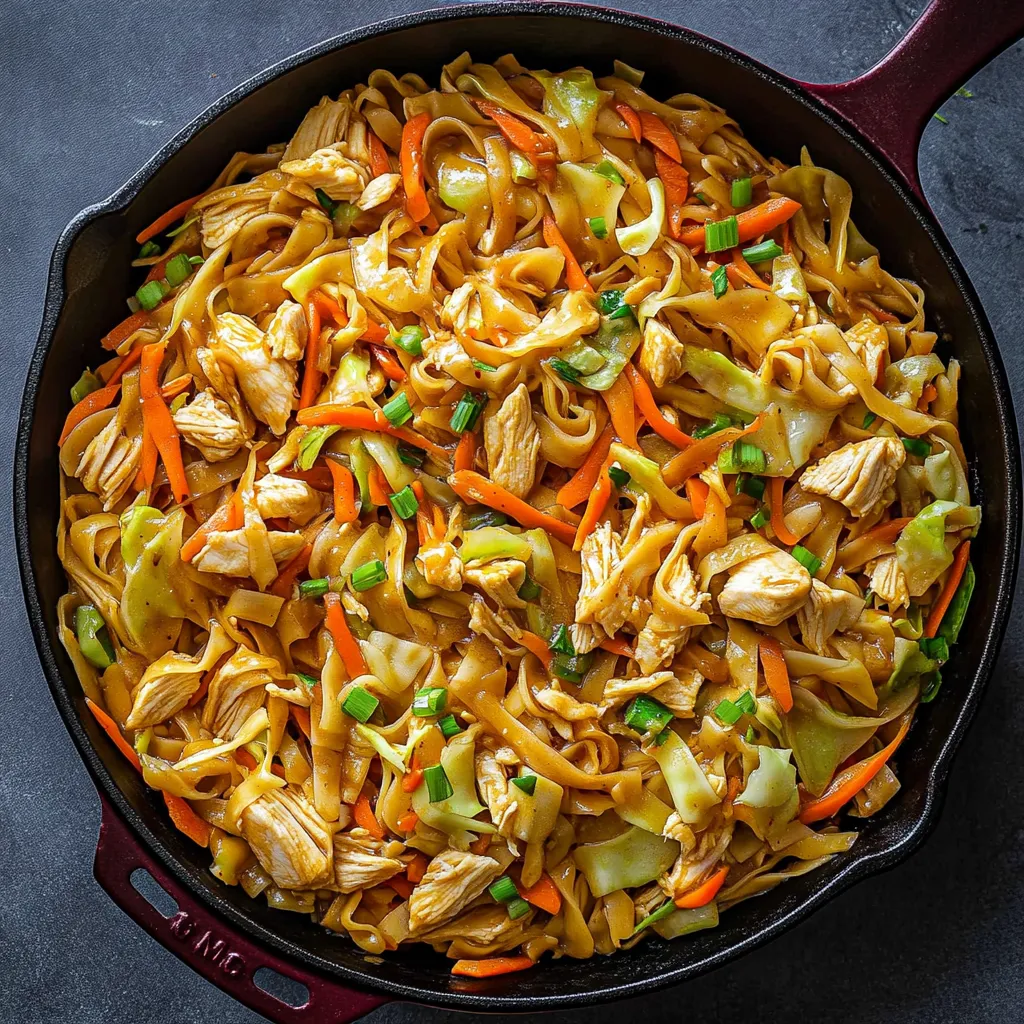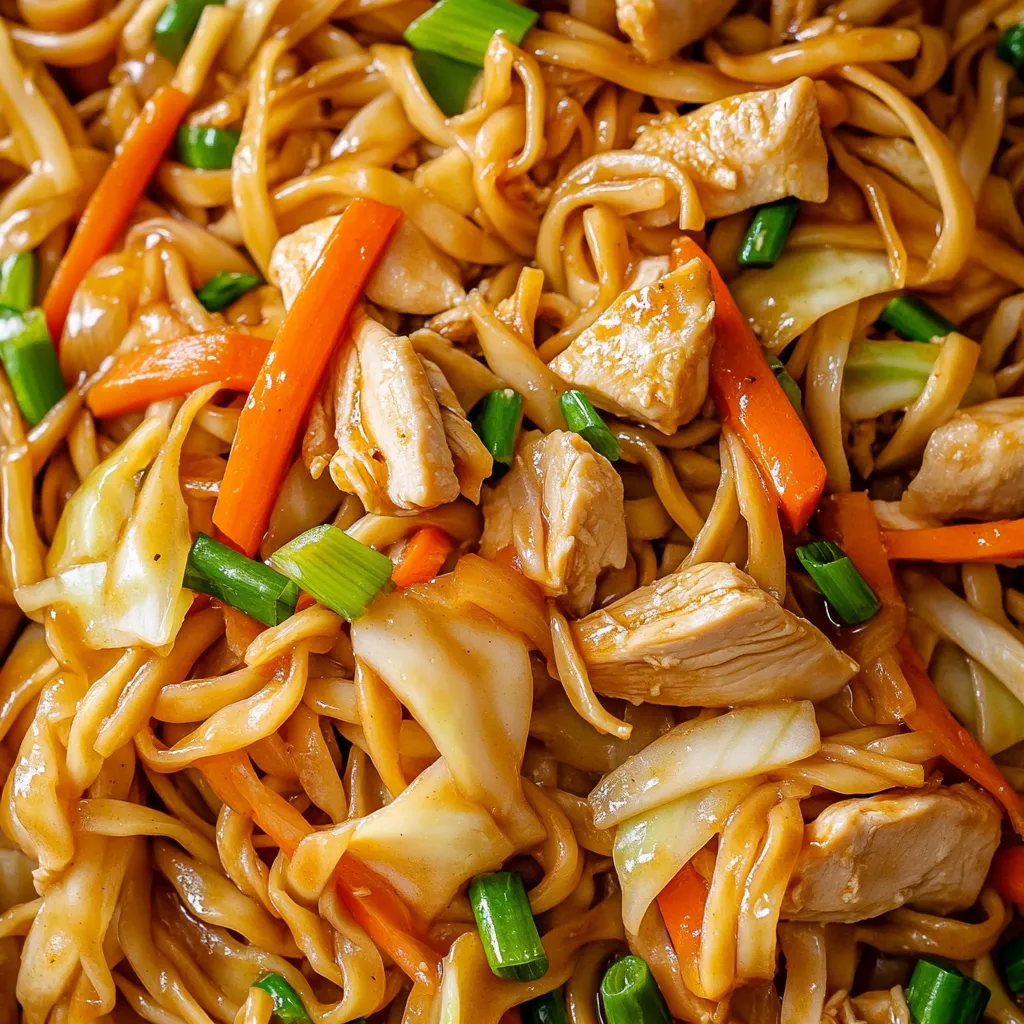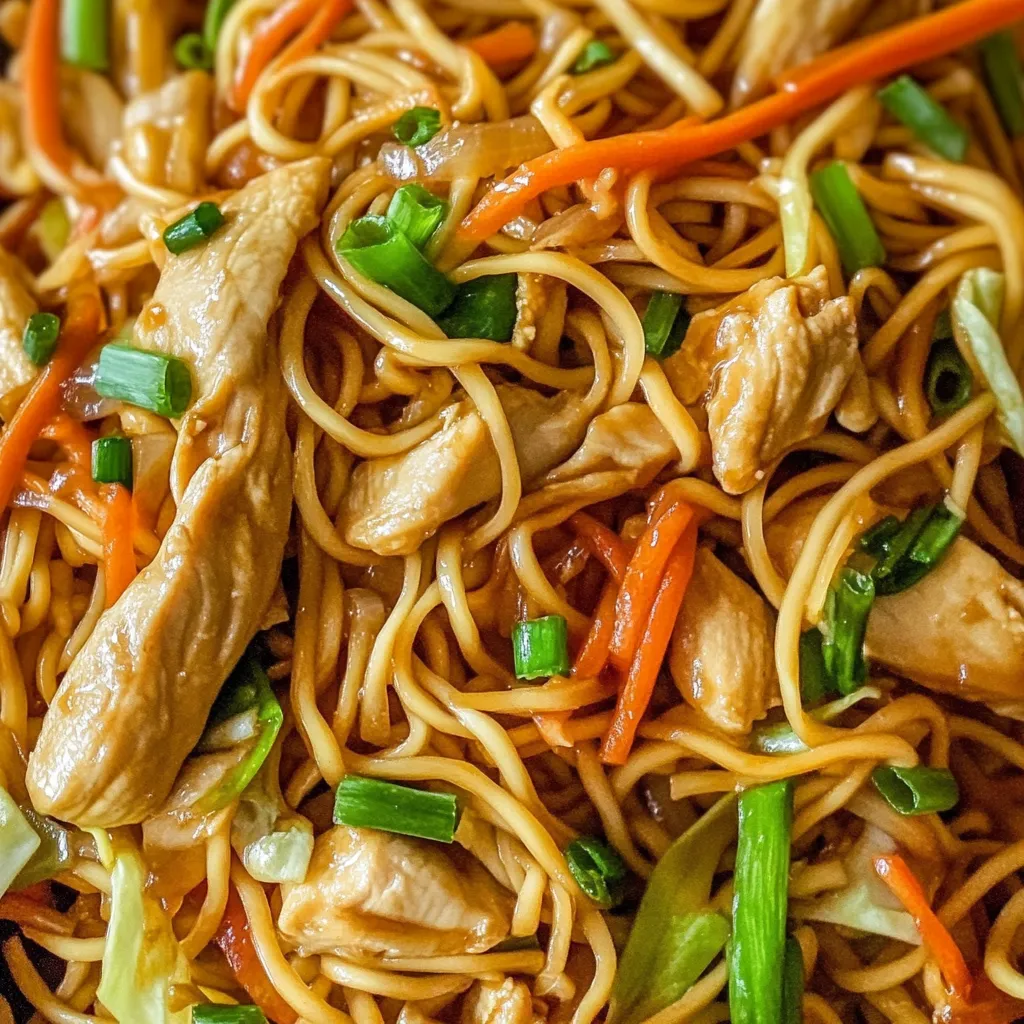 Save
Save
Tender chicken and crispy noodles come together in this authentic Chinese favorite that brings restaurant-quality flavors right to your kitchen. This homemade chow mein combines perfectly cooked egg noodles with juicy chicken and crisp vegetables, all enveloped in a rich, savory sauce that creates the perfect balance of flavors. Better than takeout, this one-pan meal lets you control the ingredients while delivering all the comfort and satisfaction of your favorite Chinese restaurant dish.
The first time I mastered this sauce at home, it was a game-changer. My family couldn't believe we could create such authentic flavors in our own kitchen. Now it's become our go-to alternative to takeout, saving both money and calories while delivering all the satisfaction.
Perfect Your Ingredients
- Chow mein noodles: Need proper cooking to achieve that signature texture; look for wheat and egg varieties
- Fresh chicken breast: Should be sliced against the grain for maximum tenderness
- Vegetables: Must be cut uniformly for even cooking and perfect texture
- Light soy sauce: Provides saltiness without overwhelming other flavors
- Oyster sauce: Creates that essential umami depth that defines chow mein
Stir-Fry Success Steps
- Sauce Creation:
- Combine sauce ingredients until smooth, ensuring cornstarch is fully dissolved.
- Noodle Preparation:
- Cook noodles until just al dente; they'll continue cooking in the sauce.
- Chicken Perfection:
- Sear chicken pieces until golden for maximum flavor development.
- Vegetable Magic:
- Stir-fry vegetables quickly to maintain crispness and color.
- Sauce Integration:
- Toss everything together, allowing sauce to coat each component evenly.
- Final Heating:
- Let ingredients meld together while sauce thickens to glossy perfection.
 Save
Save
Through countless attempts at perfecting this dish, I've learned that the order of cooking makes all the difference. One particularly memorable evening, I discovered that adding the noodles last and letting them crisp slightly before tossing with sauce created that perfect restaurant-style texture we all love.
Perfect Pairings
Transform this main dish into a complete Chinese feast by serving it alongside crispy spring rolls or steamed dumplings. A side of simple steamed broccoli with garlic sauce complements the noodles perfectly, while hot and sour soup creates a balanced meal that rivals any restaurant experience.
Creative Variations
Customize your chow mein by swapping chicken for shrimp or thinly sliced beef. Create a vegetarian version using tofu and vegetable broth in the sauce. Add different vegetables like bok choy, baby corn, or water chestnuts for varied textures and flavors. Spice lovers can add fresh chili oil or Sriracha for heat.
Storage Success
Keep leftover chow mein in an airtight container in the refrigerator for up to three days. Reheat gently in a wok or skillet, adding a splash of water or chicken broth to refresh the sauce. The noodles will absorb sauce overnight, so they may need extra moisture when reheating.
This chicken chow mein has become more than just a meal in our house - it's our way of creating restaurant-quality Chinese food at home while making memories around the stove. The sizzle of the wok and the aroma of the sauce never fail to bring everyone to the kitchen, eager to watch the magic happen.
 Save
Save
Common Questions About Cooking
- → What type of noodles should I use?
- Look for yellow Chinese egg noodles labeled 'chow mein noodles' in the Asian section of your grocery store.
- → Can I use different vegetables?
- Yes! Try bean sprouts, celery, bell peppers, or snap peas - any crisp veggie works great.
- → Can I make this ahead?
- Best served fresh, but leftovers keep well in the fridge for 2-3 days. Reheat in a pan.
- → What can I substitute for oyster sauce?
- Try hoisin sauce or more soy sauce with a bit of sugar, though the flavor will be different.
- → Can I use chicken thighs instead?
- Yes, boneless chicken thighs work great and stay even more tender than breast meat.
